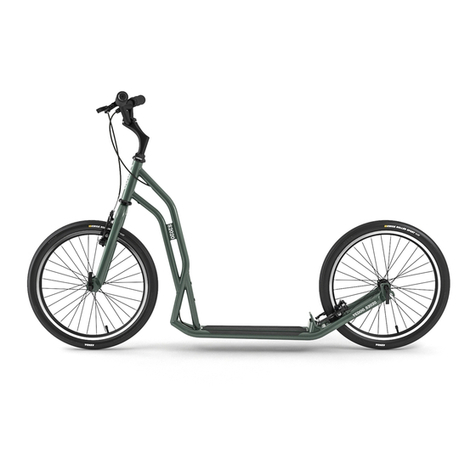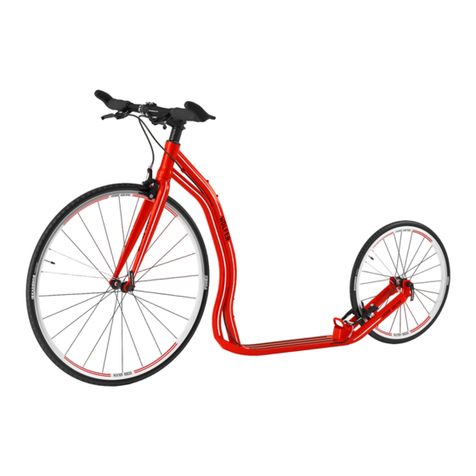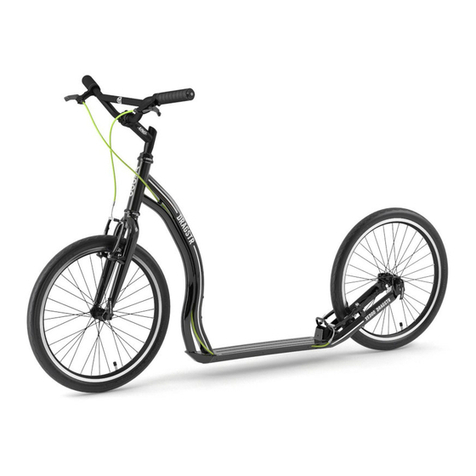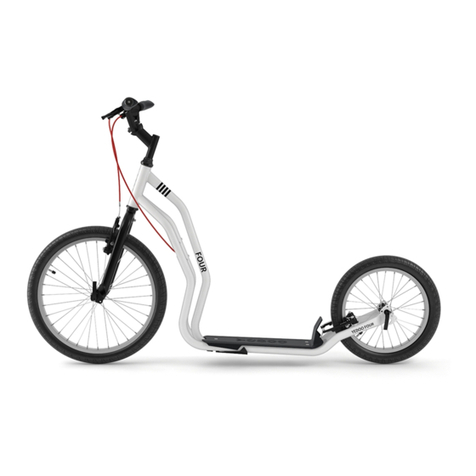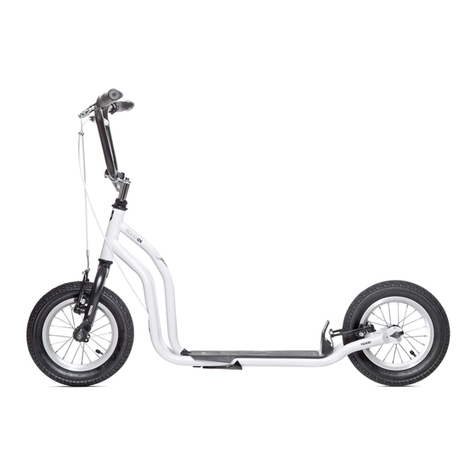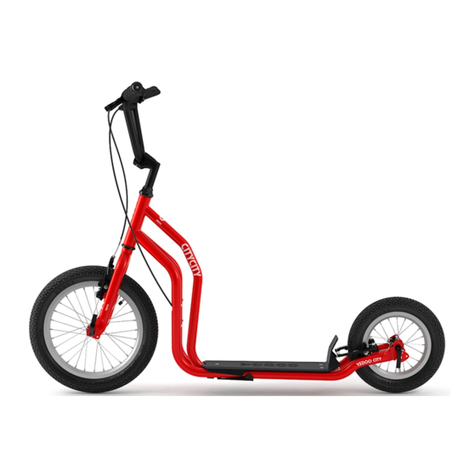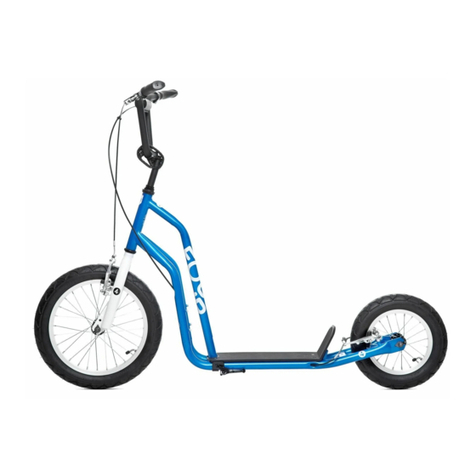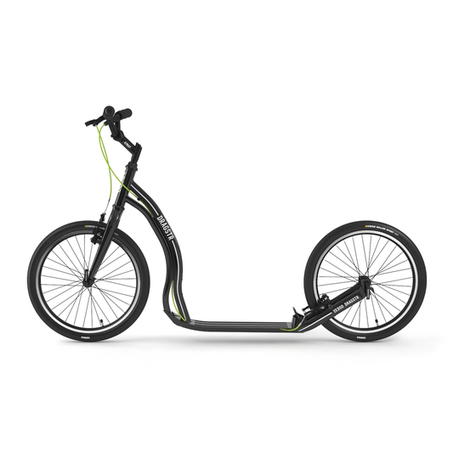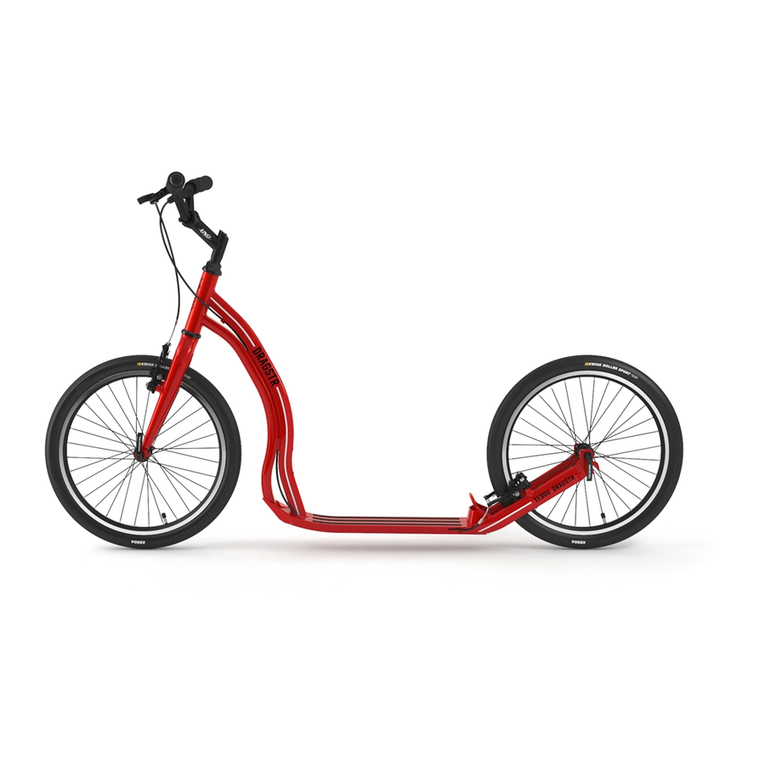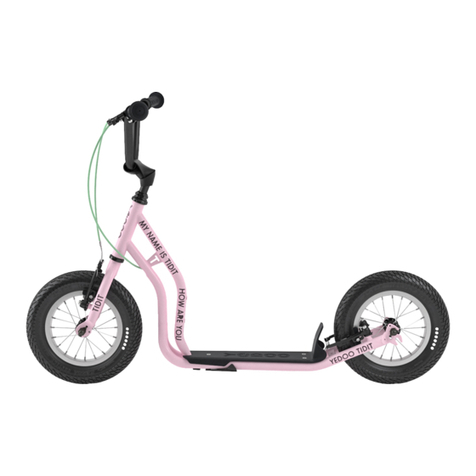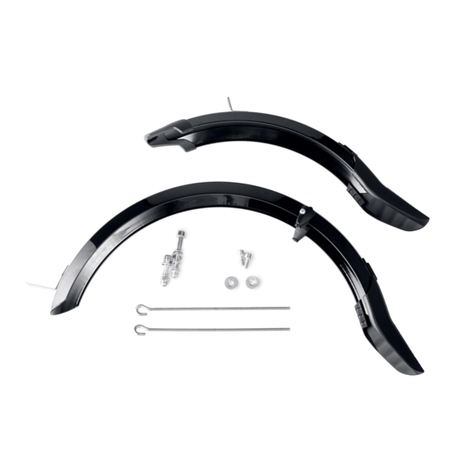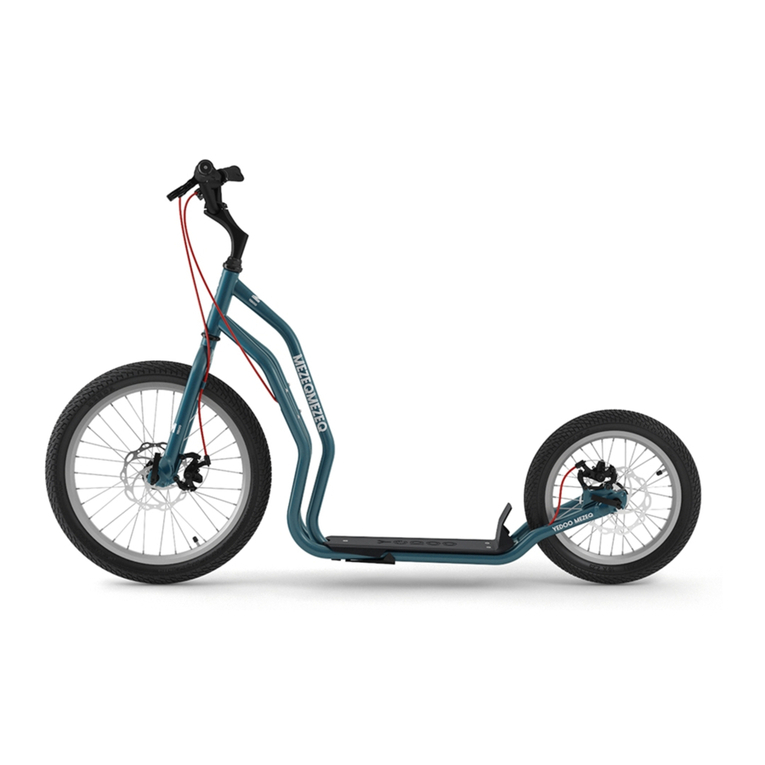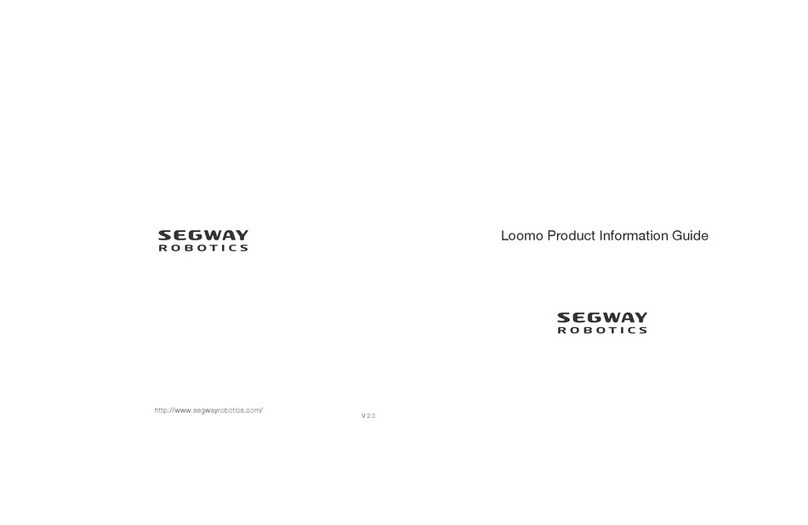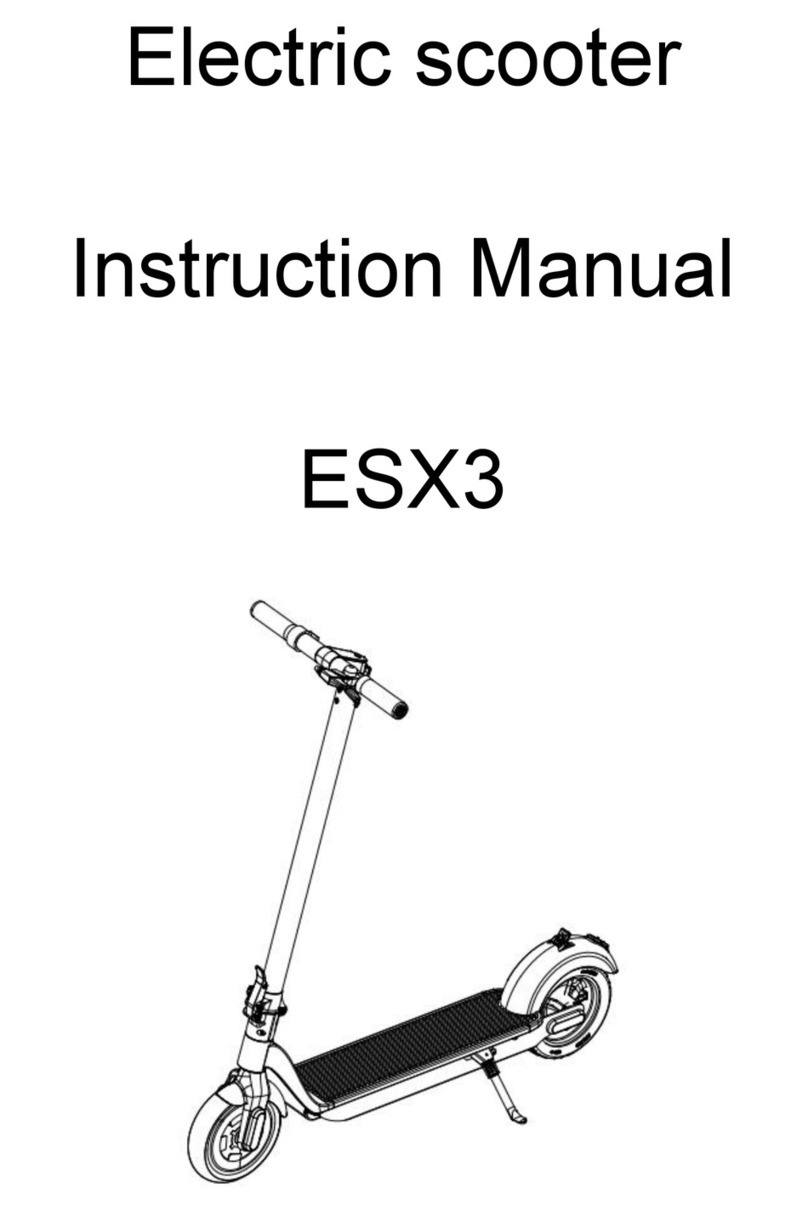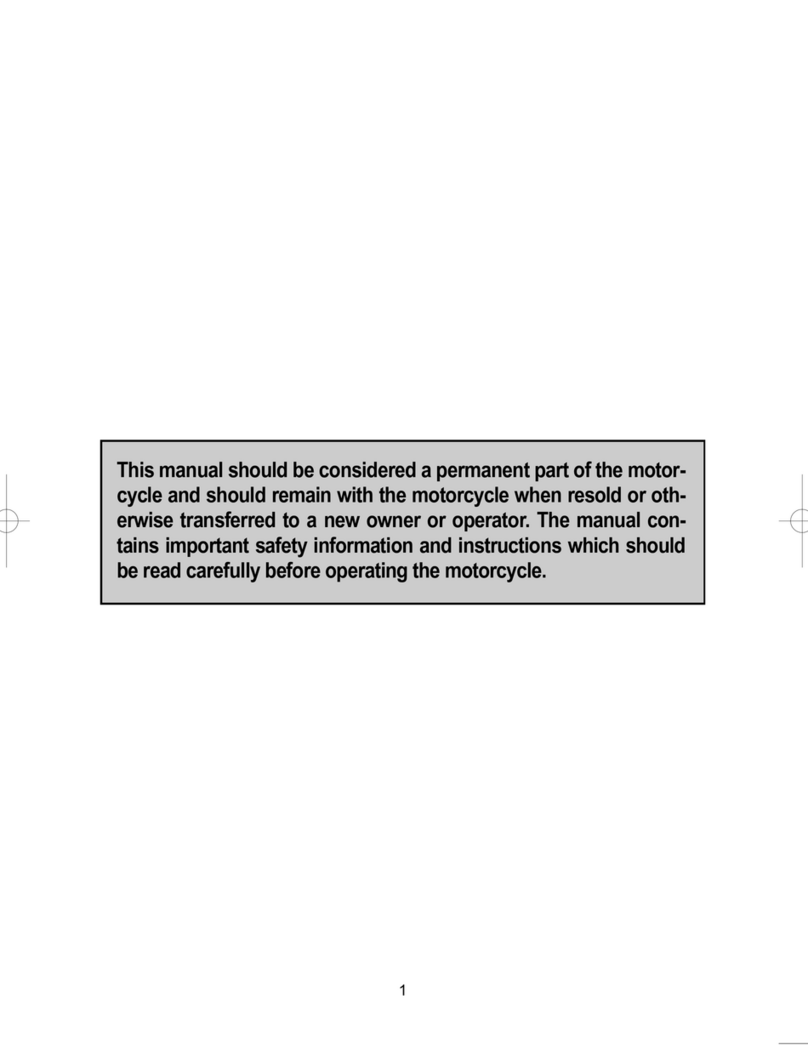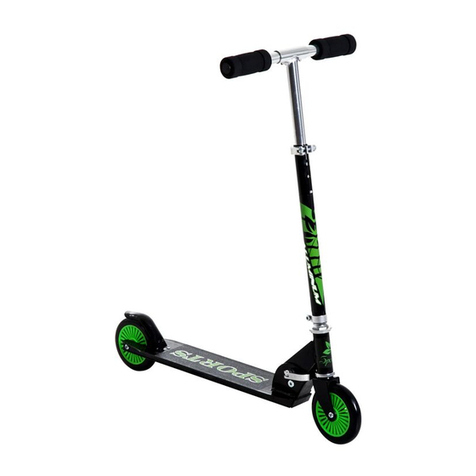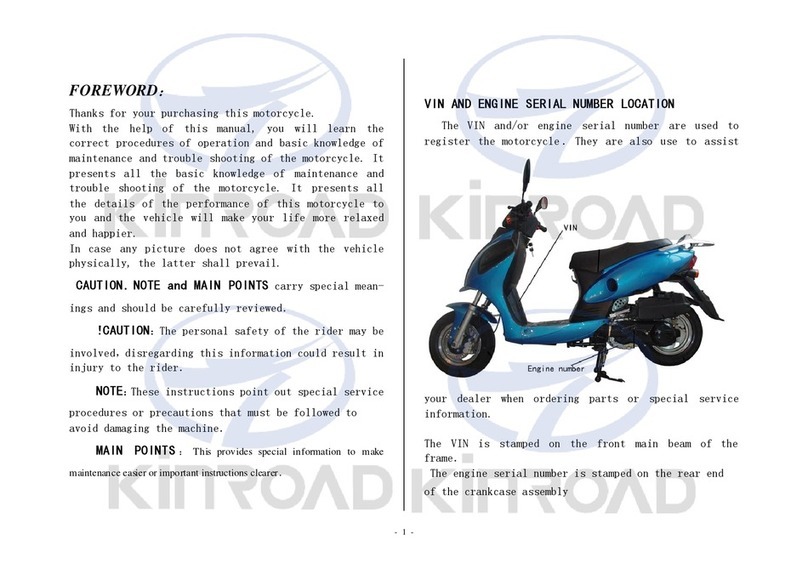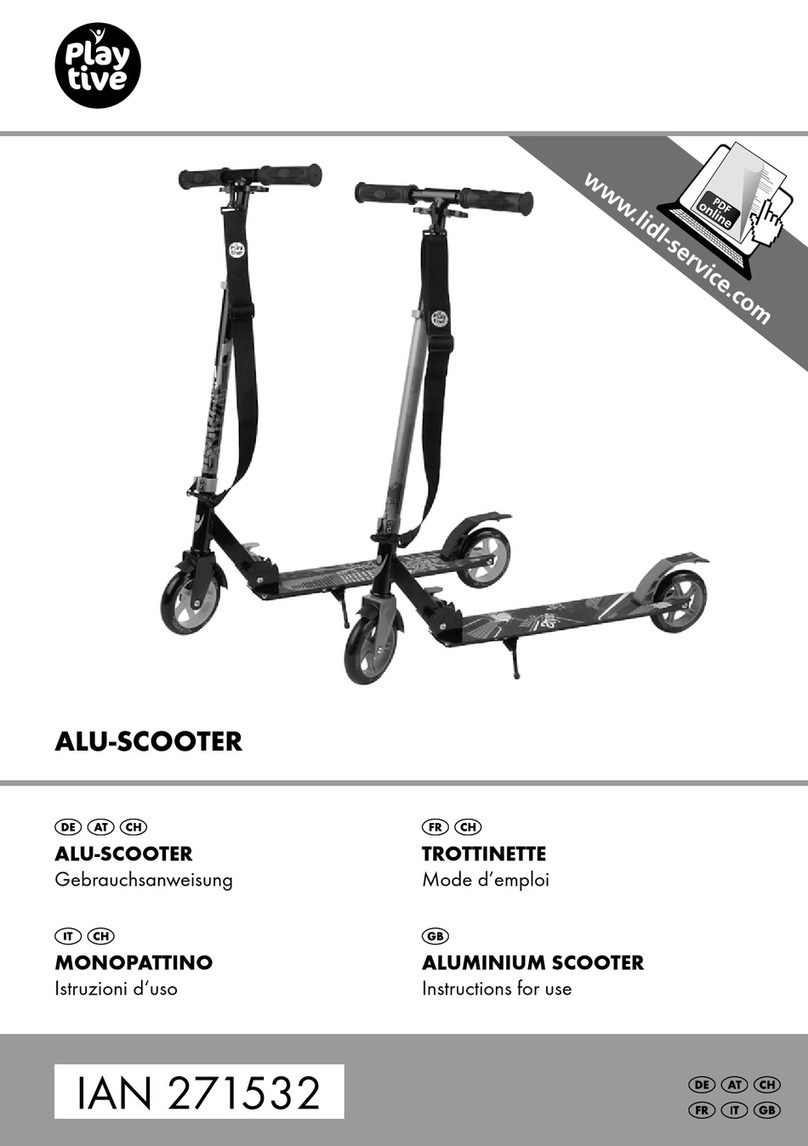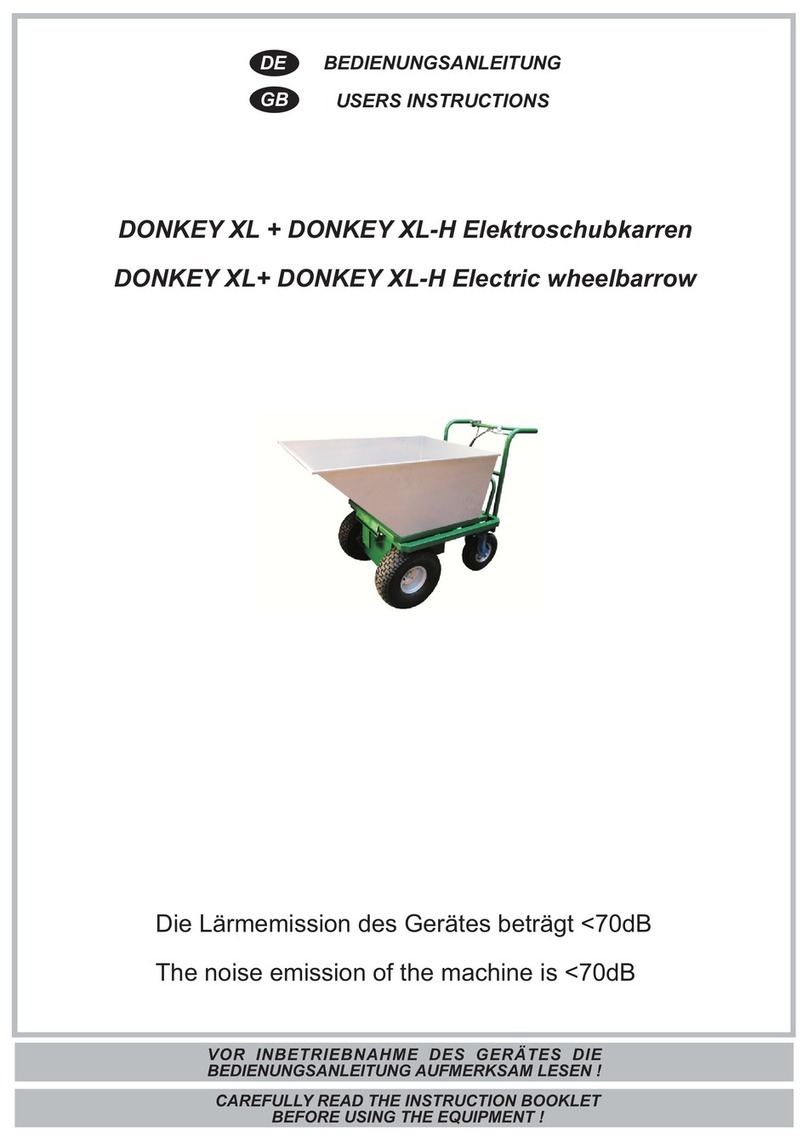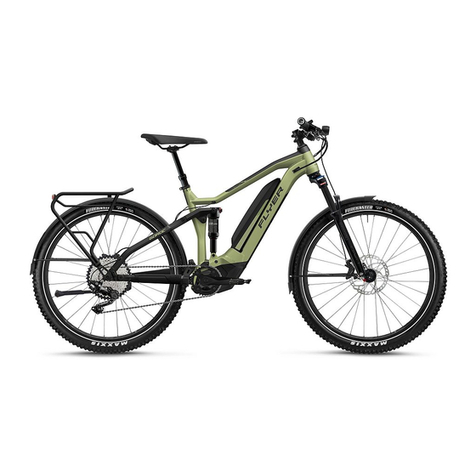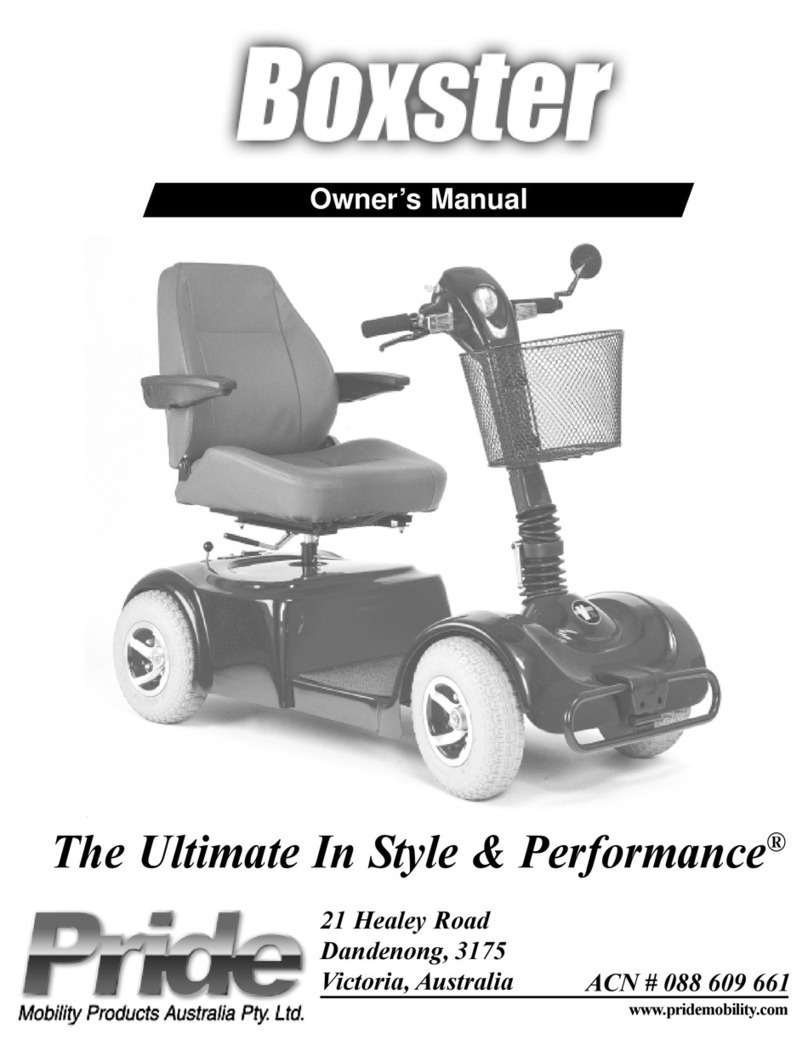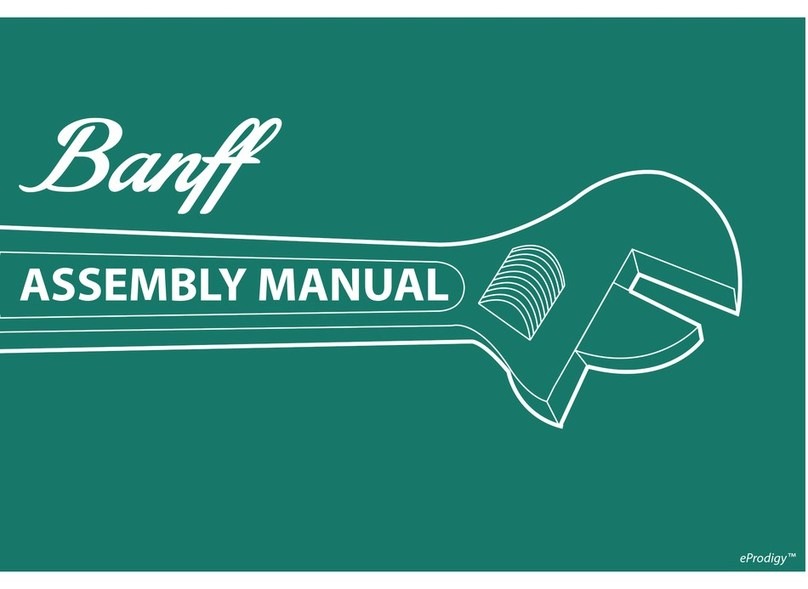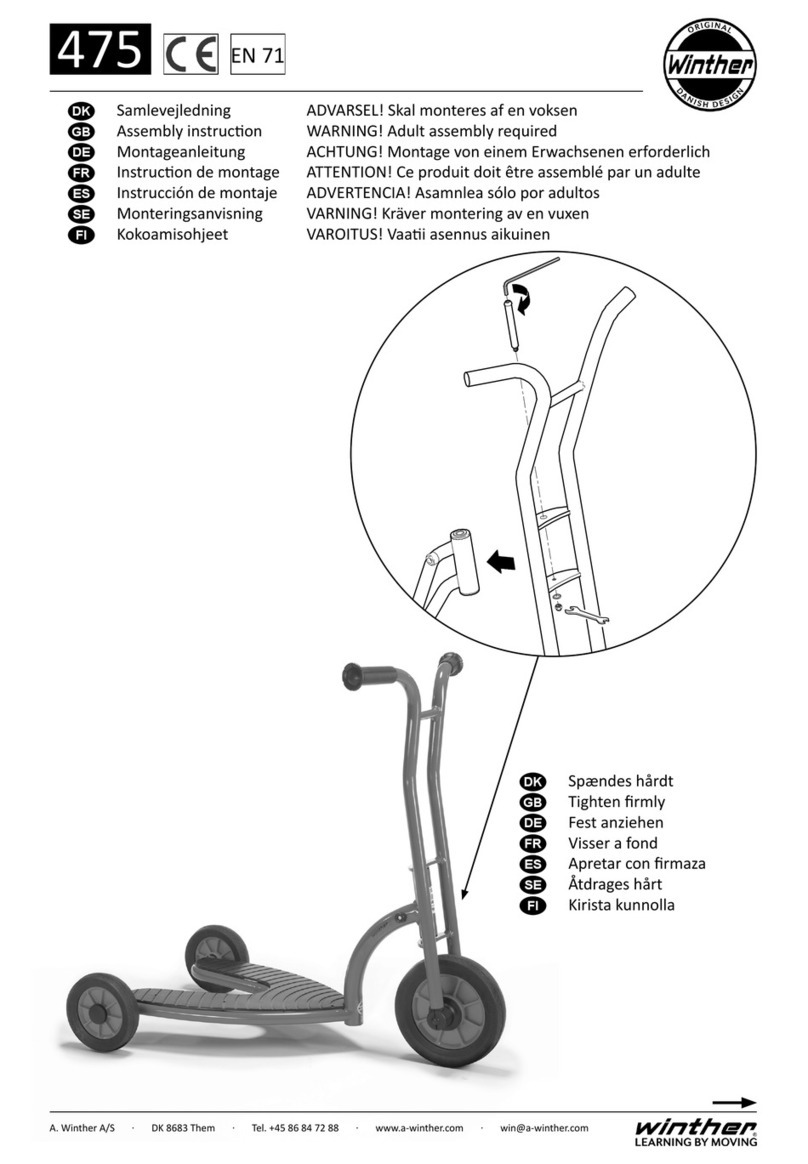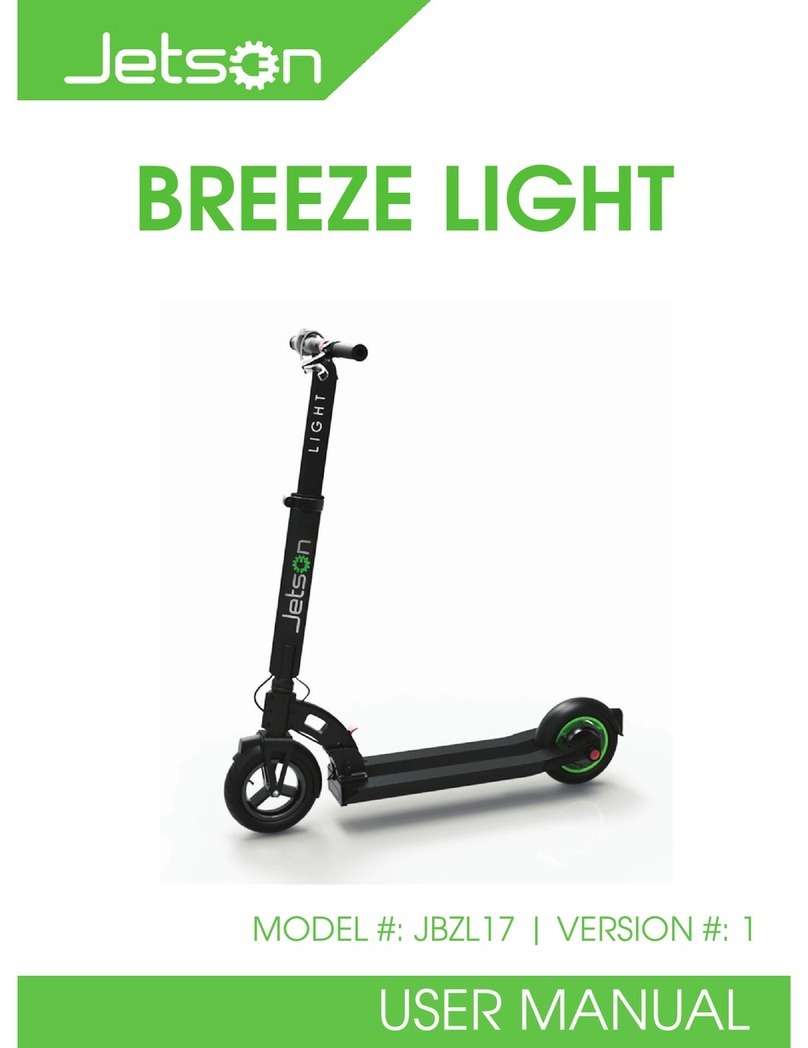13.a 14.13.b
Adjusting the bowden cables
Adjust the position of the cables and
make sure they do not extend outside
the frame of the scooter (especially in
the rear fork area).
Anti-slip tapes
Use the spare anti-slip tapes to enhance
the anti-slip eect of the footrest. You
can easily stick them onto the empty
slots of the footrest. Caution: Clean and
degrease the footrest thoroughly before
installation.
Attach them to the socket in front of
the frame.
1. 2. 3.
Assembling the stand
The stand is not included. You can
purchase it together with other Yedoo
accessories at your local dealer.
See www.yedoo.eu.
Mount the stand in the area where the
front profile of the frame is spread out.
For the best stability for a given model,
choose the right height for mounting
the stand. The stand should not extend
outside the frame of the scooter when in
the riding position.
The maximum capacity of the stand is
about 15 kg. Do not stand on the parked
scooter.
Installation manual Safety recommendations
The scooter in its basic configuration is designed for riding in
daylight in areas designated for sport and rec-reation, ideally
on a smooth, dry surface.
For riding on roads and in the dark you must equip the
scooter with additional safety devices (lights, reflec-tors etc.)
in compliance with applicable regulations in your country.
Observe traic rules, principles of safe riding and wear
personal protective equipment (helmet, bike gloves, knee and
elbow pads, boots, etc.).
Before each ride check your brakes and the overall technical
condition of the scooter. Inflate the tyres to the recommended
maximum pressure (see the side of the tyre). Do not exceed its
capacity. The scooter is de-signed only for one rider. Do not
overload the scooter. The scooter is not intended for jumps or
acrobatic rid-ing.
All components designed to decrease the speed (brake pads,
rims, tyres, etc.) get hot while in use. Do not touch any of the
parts until they have cooled down!
Riding instructions
Keep both hands on handlebars while riding. While you use
one leg for taking o, use your second leg for standing on the
footrest. Alternate your legs regularly. Press the brake levers on
the handlebars to apply the brakes. Caution: Sudden braking
may cause a fall.
Maintenance
Proper maintenance will improve safety and extend the life of
your scooter. Therefore, tighten the screw connections, check
the condition of the quick release mechanisms, check the tyre
pressures and lubricate moving parts (bearings in the wheels
and handlebars, brake lever pins, brake mechanism pivot
points, brake cables, etc.) regularly.
Make sure that the applied lubricant does not get on the rims
and brake pads. Grease reduces their eect! If that happens,
degrease soiled areas with, for example, technical gasoline.
Check the tyre tread depth regu-larly and replace the tyres with
new ones with the same parameters if necessary. If the scooter
is not ready to be used, clearly mark it as such.
Check the condition of self-locking nuts regularly (if they
become loose spontaneously, replace them with new ones).
Regularly check the wheel spokes, uneven tension of the wires
can cause cracking or decentrali-zation of the wheels.
The product complies with the relevant EU standards (EN14619)
and it also received certificates of quality and safety by a leading
Czech testing institute (Strojírenský zkušební ústav,s.p.).
The manufacturer and importer in the EU is INTREA – PIKO, s.r.o.,
Sasanková 2657/2, 106 00 Prague 10, Czech Republic,
www.yedoo.eu.
Exercise of rights arising
from defective performance
General provisions
Content, scope and duration of the purchaser’s rights arising
from defective performance is governed by the applicable laws
of the Czech Republic, in particular the relevant regulations
of the Civil Code (Act No. 89/2012 Coll.) and the Consumer
Protection Act (Act No. 634/1992 Coll.). The rights of the
purchaser within these regulations are not aected by this
document or the information contained in it.
Period for exercising of rights arising from defective
performance
The purchaser can apply the right from defects in newly bought
Yedoo scooter (hereinafter goods) within a period of 24 months
from the day of receipt. If the buyer defines the defect of the
goods legitimately, the period for exercising rights arising from
defective performance is suspended for the time during which
the buyer cannot use the goods.
Specifications of application of rights arising from the
defective performance
Rights arising from the defective performance are applied to
the dealer where the goods were purchased (see details below).
We recommend to submit this document, proof of purchase
and a complete scooter free from any impurities when applying
the rights from defects.
The seller will issue a written confirmation of the exercise of
rights arising from defective performance or a confirmation
ofrepair.
Specification of rights of defective performance
When assembling the scooter the instructions given in the
installation manual must be followed. The scooter must be used
exclusively for the purpose for which it was made. The scooter
must be stored and maintained according to the provided
manufacturer’s instructions. The manufacturer’s liability does
not apply to defects caused exclusively by improper installation
or use of scooters in conflict with the user manual.
Model of the scooter:
Serial number of the frame:
Date of sale:
Vendor:
Stamp and signature:

